Follow along while I tear this Guild/Citron collaboration down to see what makes it tick while also delving into the history of a fascinating guitar that was only made for a very short time in the mid 1980s.
Introduction
It’s very tempting (at least for me) to compare this guitar to a Steinberger. I will do exactly that later on, but before you jump to the conclusion that The Guild X92 Citron was inspired by a Steinberger design, let me set the stage for why that’s not the case.I love Steinbergers, and have a vintage GL4TA myself, but the history of these two guitars doesn’t overlap in a way that makes me call the Guild X92 a Steinberger wannabe. The Guild X92 Breakaway was made for a very short time in 1984 while the Steinberger has a different history.
As a guitar player, I first heard about Steinberger when this guy showed up with a wacky looking guitar, the likes of which I’d never seen before. According to this fabulous article, this Steinberger GL2T guitar was built for Eddie Van Halen in November 1985. Steinberger had been selling bases since the early ’80s (you can see Sting playing one in this video from 1982), but the TransTrem version of the guitar (the one Eddie is playing) was introduced in 1984, and though other guitarists used them I could easily argue that Eddie made them famous enough that every guitarist (myself included) instantly wanted one.The brief Steinberger history is just to show that there really wasn’t anything to copy when the X92 Breakaway was being developed. It’s not a Steinberger copy; it’s a unique guitar that superficially resembles another brand while really having nothing in common with it aside from maybe the size and the pickups. I’d venture a guess that the guitar (and the Steinberger to a degree) were more of a symptom of a trend around smaller guitars, but even that’s not entirely right.
When I first wrote this article I referred to the X92 as a travel guitar, and while doing so I tracked down the inventor and designer of this guitar, Harvey Citron of Citron Guitars. in my talks with Harvey he made it plain to me that the model was not designed as a travel guitar but rather as a full-scale guitar that could function as a main guitar while also happening to be great for travel. On the surface, that may seem like semantics but it’s really not, as evidenced by this photo of my X92 next to my 1990s Jackson super-Strat. What really made it all click for me is the fact that the Steinberger mentioned repeatedly in this article is also not billed as a travel guitar, even though it’s even smaller than the X92. Consider the X92 as a guitar distilled down to its essence with some unique features that happen to make it great for travel. The Guild X92 Citron Breakaway makes an appearance in the 1984 New Guitarchitecture catalog where a cool white finish is shown. Aside from the photo of the white one in the catalog I have never seen any color other than black, but having seen so few of them I can’t possibly say what colors may be out there. If you’ve got one in a color other than black please leave a comment or email me a photo as I’d love to see it. I’ll even add it as a link here for the world to see, with appropriate credit, of course.Sadly that catalog offers no information about the guitar aside from the photo, and without a price list that shows the guitar I can’t really say much about the details. Luckily, as a catalog-collecting lunatic I have a physical copy of a Guild flyer for the guitar!
But wait: the flyer calls the guitar the Guild X92/Citron while the catalog states the name of the guitar as the X92 Citron Breakaway. In talking with Harvey Citron I learned that the proper name of the guitar should be the Guild-Citron X92 Breakaway which honestly makes the most sense due to the collaboration between the two companies. In the title of this article I used Guild X92 Citron Breakaway because I primarily write about Guilds and that’s how Guild described it in the catalog.In the Guild flyer the guitar is billed as fitting in the compartment above the seat on a plane, and as a formerly frequent flyer (pre-Covid) I feel the need to comment on that.
While the guitar in its case is indeed quite small, overhead bins on airplane differ not only by airline, but by airplane as well. There is, in fact, no standard for overhead bin size that I could find. Hell, some planes have different sized bins within the same aisle! Some planes like the Embraer RJ145 have bins that are so small that I wonder if the guitar would fit with the body parts separated and without the bag!
Still, the fact remains that this guitar is smaller than a regularly sized guitar and it is definitely could be considered travel sized, though what travel sized actually means is up for discussion.
On the topic of the name, I kind of take issue with the term Breakaway and think they should have just stuck with X92 Citron even if that disagrees with my previous notes on the name. The term breakaway has a special meaning which has nothing to do with the Kelly Clarkson song that was the top result on Google when searching for the word. I mean, she was two years old in 1984, so…Anyway, the term breakaway in this context is defined as an object made to shatter or collapse under pressure or impact. That is absolutely not what this guitar is designed to do and I just can’t get past the image of smashing this guitar on stage Pete Townsend style in the hopes that the body would separate on impact so that I can get it back into the case.
This guitar is designed to break down which is defined as to take apart especially for storage or shipment and for later reassembling. Marketing, being what it is, likes to play fast and loose with the meanings of words, so I get it, but I still maintain that X92 Citron was a better name. Hell, Guild loved to name guitars after planes so maybe a folding-wing aircraft like the Corsair or the Hellcat would have been a fun choice. I suppose then I’d just complain about the wings folding vs being removable, and I suppose I can see not wanting to have the name Hellcat, but who doesn’t love a Corsair?
One of the cool things I learned while speaking with Harvey Citron was that the shape of the guitar came as a result of him playing around with the shape of the Gibson Moderne. That didn’t really click for me until he said it, after which my reaction was pretty much, Holy crap, you’re right! which made me laugh since I had just told a guitar design legend that he was right about something he designed. One of the things Harvey repeated was that he felt like his breakaway design was a good idea and that it would work with most guitar shapes. I tend to agree, given whatever shape is used has a lot of non-critical space above the pickups. The real key seems to be the fact that the bridge is so far back on the body which makes the scale length include almost all of the available space. I noticed something similar on the larger Guild X79, though that guitar was probably not designed with the same goals in mind. Harvey also said that since he still believes in the design that he’d love to see a modern company make them again. Hey Guild – here’s a chance to bring back a very cool vintage model with an agreeable price-point that’s unlike anything else in the industry!One of the questions I asked Harvey was if he still had the prototype, and if he would he be willing to share a picture or two if he did. To my delight he said yes and sent me these pics.
Some notes about the prototype are in order:- It’s a neck-through design as opposed to the set-neck on the Guild guitar
- It does not have a swimming pool route like the Guild.
- In fact, there is no pick guard at all!
- The pickups were designed and made by Harvey Citron
- The pickup wiring appears to be accessible from a back panel, however the pickups are mounted from the top similar to the way that P90s are mounted
- Likewise, the electronics are accessible from a back panel
- The vibrato tailpiece and locking nut are of Harvy Citron’s own design
- The fret board is a much nicer ebony than the Guild’s rosewood
Some of the differences between Harvey’s prototype and the Guild model show a disparity in design philosophy. Where Harvey felt like the guitar should be a top quality instrument, it seems as if Guild wanted to make it meet a certain price point so that they could make a profit, which might have been a good path if they’d sold a large number of them.
On the subject of how many Guild-Citron X92 Breakaway guitars were made, that’s a tough thing to nail down. According to the History of Cool Guitars book (Guitar Stories Vol 2), 637 were produced. That book goes on to say that the guitar was well received because so many were made until it was discontinued in 1986, but this seems to be quite incorrect. The often incorrect Guild serial number chart shows the last number made being HH000129 which would imply that 129 of them were made, though that assumption is also likely incorrect.Harvey told me that he got paid royalties for far fewer than 100 of them, and after speaking with Hans Moust, author of The Guild Guitar Book, he told me that first serial number issued was HH000101 [email: Nov 7 2020] which, if the serial number chart is correct, seems to indicate that only 28 were ever made. I can’t say how accurate that number is, but it certainly seems close to Harvey’s recollection. For what it’s worth, mine is Serial# HH000113 and was bought from a collector in Sweden.
Sadly, neither the catalog nor the flyer offer any useful information about the guitar aside from the photos, and I don’t have a 1984 price guide. I do have one from October 1985 with this guitar in it where the model had been crossed out by hand, my guess being that the guitar was discontinued before the price list was released. I’ve seen a lot of old price lists like this and I can easily imagine a sales manager crossing them out before handing them to a store owner.I took my liberties with the scanned copy of the price list and managed to almost completely remove the lines. In this snippet from the October 1985 price list you can see that the X92 Breakaway listed for $799 and came by default with three single coil California pickups, though I don’t recall ever seeing one in that configuration. I also notice that the guitar is not listed with a Kahler.
Lower on the price list we can see the following options and their associated additional prices:- Single EMG humbucker: $100
- Dual EMG humbuckers: $200
- Three EMG Single Coils with fat control: $200
- One EMG Humbucker and two EMG single coils: $245
- Kahler Vibrato Available all above: $200
If I’m reading all of that right, then my X92 would have been $799 for the guitar, $245 for the pickup combination, and $200 for the Kahler for a grand total of $1244. Given that I don’t recall ever seeing one without EMGs and a Kahler, that all seems like some sketchy machinations by Guild in order to allow them to say that the guitar was affordable when it looks like you’d have to custom order one if you wanted a base configuration.
Clearly the one I have has three single coils, and the only other combination I’ve seen is Kurt’s from the Guilds of Grot who has an HSS model. Although I can not claim to have seen them all, I can tell you that I’ve never seen an HH or H configuration, but then again in my 12+ years of watching Guilds, I probably haven’t seen more than five of these guitars to begin with, and counting mine three of them are in the hands of collectors. Somewhere in my travels I found this article about the Guild X92. The last line of the article, in then Guild president Mark Dronge’s response, says that the guitar now comes with all black hardware, though I don’t recall ever seeing one. It also kind of cracks me up that he compares the guitar to a saxophone saying that. “No one would ever dream of transporting a sax fully assembled.” I mean, while that’s true, it’s not like the saxophone was designed to be smaller when packed; it was designed so that the neck could be replaced while also swiveling in order to work in various styles of play.Then again arguing with 35 year old magazine articles is probably a sign of some mental instability on my part, so let’s move on.The case
The case, which is not commonly found with the guitar today, is basically a small padded gig bag that fits the guitar very well and includes a padded pocket on the inside in which to store the removable wing. While the guitar does have the ability to sort of slop around in the case, when the guitar is properly placed in the bag the padded wing pouch also serves as a means to limit the neck from moving around, thus stabilizing the guitar a bit. This bag is by no means as solid as a hard case, but remember this entire setup was designed to fit into an airplane overhead compartment, so being a bit squishy could be considered a plus.I will say that it’s kind of unfortunate that you must disassemble the guitar in order to get it into the case because I like to keep my guitars in the case when not in use. Additionally, due to the shape of the guitar’s body, it doesn’t sit well either directly on the floor or on a stand. That means repeatedly removing and attaching the wing in order to store it in the case, and in the few examples I’ve seen, the latching mechanism is a bit more complicated to use in practice than the design would imply.
Breakaway Feature
My semantic grumblings about the work breakaway aside, the namesake feature is still pretty cool and engineered in a very interesting way.The guitar is capable of being broken down or split into two discrete pieces. The main body of the guitar (which remains a fully functional guitar, by the way) comprises the far larger of the two pieces, while the smaller top part that I call the wing pops off with the push of a button that releases the locking mechanism which allows the user to pull the wing away from the body. The addition of a guide pin ensures that the wing always aligns properly while the button mechanism ensures a tight fit.
The button is actually the top of what appears to be a ball locking quick release pin such as the ones found here. When the button is pushed, the ball bearings on the bottom of the pin pull into the shaft thus allowing the pin to be removed from the hole. In its normal state, the ball bearings are forced outward whereby it locks the wing to the body of the guitar. With the addition of the guide pin, this interlocking mechanism works very well and, at least on my guitar, the fit is tight and the lock is secure. Honestly if I didn’t point it out to you you might not even notice that the guitar is two pieces when it’s locked together. The wing seems to serve no purpose aside from ergonomics, though I should point out that the strap peg is on the wing so if you have visions of playing this like a Steinberger while standing, that’s not going to work. Note that the guide pin appears to be brass which should make it relatively long lived. You can also see the ball-bearing end of the quick release pin which is what’s on the other side of the blue button seen earlier. I mentioned before that the guitar is perfectly playable without the wing, and it is, but it definitely feels like you’re playing two-thirds of a guitar when you do so. The female side of the guide pin assembly is recessed just enough so that it isn’t in your way which I find to be a very nice attention to detail. On a lesser guitar this piece would cut into your skin or just be a general nuisance, while on this instrument it reeks of quality manufacturing. Sadly, while the build quality of the interlock mechanism seems quite good, the actual act of locking and removing the wing is finicky as hell. You might expect that the button does not need to be depressed when assembling the guitar because the act of pushing the two pieces of the guitar together with force the balls to compress into the pin, but I’ve found that to not be the case. In addition, thanks to the guide pin, the wing must be positioned perfectly parallel to the side of the guitar’s body when being attached. This means that the act of attaching the wing includes holding the wing parallel to the body (which is more difficult than it sounds), pushing the recessed button, and sliding the wing into the body of the guitar. The first couple of times I did this I almost dropped the guitar, but after a few attempts I learned that holding the bulk of the wing in one hand while pushing the button with the index finger of that same hand, all the while holding the body of the guitar with my other hand did the trick.Finish
The finish on this guitar is quite clearly poly as evidenced by the impossibly glossy finish on this 35-year old guitar along with the chips in the finish as seen in the last section.While the flyer seen in the Introduction says that the X92 was available in the hottest colors, I’ve only ever seen them in black and the single white one shown on the catalog page. I did find this one in a natural or possible aged finish, but based on the non-original knobs and the pick guard adornments I have to assume that it’s been refinished. Edit: A sharp-eyed reader found a post about this guitar where, translated from the original French he says, “In short, I open the case and I find the guitar pictured (it was white)… I have it repainted by James Strussard I do not know when…”
If you’ve got one in a cool color that isn’t black leave a comment and I’ll include it here!
Fretboard and Neck
This tiny guitar is actually a full-sized guitar! With its 25½” scale length and 1 5/8″ width at the nut, the guitar’s fretboard is just like that of a vintage Strat. The neck itself is a comfortable .78″ deep at the first fret, though the neck is kind of U or D-shaped with a flat back instead of the more common C-shape.The fretboard is a very lightly colored rosewood and is unbound and the fretboard markers are simple dots. I measured the frets as .05″ high by .110″ wide making them jumbos, which I must say left me pleasantly surprised on a guitar like this. It was the ’80s after all, and if you couldn’t shred on the plane then why go flying?
While I tend to prefer a wider neck these days, for a small guitar like this the 1 5/8″ width works for me, and since the frets are large I find the guitar to be quite playable. I was honestly kind of surprised at how playable the X92 was, and I attributed that perception to my previous experience with smaller guitars being centered around ¾-scale Ibanez and Cort guitars, both of which cost about $100. Make no mistake: this is a real full scale guitar and not a cheap import toy like those models. Remember, the prototype that Harvey Citron built had a neck-thru design with an ebony fretboard, but Guild changed that to be the less expensive rosewood with a set-neck design, my guess being to fit in with their existing build processes. While I would love to have seen this as a neck-thru, the guitar feels as solid as any Guild to me and the neck on mine is still ramrod-straight after 35 years.Build Quality
As stated above, this feels like a real guitar because it is a real guitar. This is not a toy, and it is not some shrunken down unusable almost-guitar like the aforementioned modern ¾-scale guitars. This is a full-scale (and Strat scale to boot) guitar with three pickups and all the fixin’s.According to the Guild flyer shown in the introduction, the X92 Breakaway has a mahogany body for wamth of tone, a maple neck for stiffness and clarity, and a rosewood fretboard. Like I’ve repeated again and again, it feels like a real guitar because it is a real guitar! It’s just small and can be broken down and stored for travel.
With the pick guard off, the guitar looks like any other guitar that basically has a swimming pool route and just enough wood cut away to fit every possible permutation of available pickup combinations. Using a Kahler 2300 Pro allows for a simple top-mounted approach that is much simpler than a Floyd Rose, though my guess is that Guild insisted on the Kahler since that’s what they used on all of their ’80s super-Strat models. I’d like to point out again that the swimming-pool route was not Harvey Citron’s doing as you can see by the photos of his prototype in the Introduction.When assembled, the guitar measures only 38¼” (97.2cm) tip to tip by just under 12″ (30.5cm) at its widest point. Both the length and width is diminished significantly by removing the wing which is no doubt why it was designed to be removed. My X92 Citron Breakaway weighs 6 lbs 6.3 oz (2.9 kgs) which isn’t the lightest guitar I own, but it is extremely well balanced and just feels great in my hands.
Pickups
The pickups in my guitar are all EMG SAs, and though EMG back in the ’80s didn’t feel it was necessary to label anything, the presence of gold EMG logos indicates Alnico II magnets which helps to identify them. Thankfully the logos are still there on mine since they’re often worn away on vintage guitars.EMG pickups were all the rage in the mid-late ’80s, and while they’ve fallen out of favor for many players, my only real complaint with them is that being active pickups they require a battery, and that battery is behind a little cover that’s held in place with four pick guard screws. Sadly, quick-access for the battery was not included on this guitar.
Electronics
The electronics are all EMG which means 25k pots due to the pickups having built-in active preamps. These are from early in the heyday of EMG so the pots are normal sized unlike modern EMG pots that are more like the tiny pots you’d find in a guitar pedal. The connections are all soldered as well, where modern EMG components are all quick-connect. I know people hate soldering, but I’ll take a solder connection over quick-connect any day of the week. Of course I’m an electronics nerd, so feel free to argue with me about that if you’d like, but the simple truth is that a solid molecular connection is better and I’ll prefer it over the convenience of a quick connect every time — especially when the connections are inside a guitar that will sit unchanged for 30 years. The wiring is reasonably well dressed and looks good, which is something I can’t say for all of Guild’s ’80s guitars. The three wires you see that go out of frame in the pictures are the battery positive (red) and negative (black) and the signal output (white). The red wire goes to the 9V battery while white and black go to the output jack. The output jack is a 3-conductor tip/ring/sleeve stereo jack so that the ground is interrupted when the guitar cable is removed, thus cutting the circuit and saving the battery. Sadly I forget about this all the time which sucks when you have to pull four screws to get to the battery. The completely unlabeled bit of electronics on the bottom of the tone knobs appears to be the same board found in my original Guild X100 Bladerunner. Though I haven’t yet published a review of that guitar (I’m working on it!) I can tell you that after emailing EMG they responded that “It looks like an early EMG Afterburner control.” Sadly, that’s not right at all.Since this board is soldered to the tone pot and thus controlled by it, I thought it far more likely to be an early EMG-SPC or “Strat Presence Control”.
Also called a fat control (which was an option often seen in Guild catalogs in the ’80s) the EMG-SPC was advertised as generating a fatter, louder tone from any single coil pickup. The EMG catalog went on to say that it could be used on a humbucker to make it REALLY fat, apparently in a way that’s good for slide guitar. Then again I thought that it could be an EMG-EXG. Unfortunately there was no way for me to be sure without a schematic or an actual definitive statement from someone in the know because I didn’t hear anything obvious from the tone knob that would help to identify the electronics.And then a miracle happened.
While looking around online I found this amazing Reverb ad selling all three of the vintage EMG controls all labeled with a clean picture! Looking at the layouts and chip IDs, I’d say the control in this guitar is definitely an SPC. It certainly boosts the midrange but what’s weird about the control is that bottom knob in the tone position is not a tone knob at all. It’s more of a “turn my single coil into a humbucker” dial because it fattens up the midrange while dialing out the chime. I can hear the screaming hoards of single-coil devotees crying, “why would anyone want to do THAT?” Well, that’s kind of what a Tube Screamer does, and plenty of people seem to love those.And now I can hear the screaming hoards of Tube Screamer fans telling me that I don’t know what a Tube Screamer does.
In short, if you want this guitar to sound like a Strat, then the not-a-tone-knob needs to be dialed all the way down (as in on zero, not ten). If you want it to sound more like humbuckers, then you dial it all the way up to 10 (dimed).
At first glance the wiring gave me that ’80s guitar “oh crap” vibe since there are a pile of wires, an unlabeled circuit board, and generally just a bunch of “stuff” going on, but as I traced the wires I discovered that the circuit is actually quite simple. The three pickups are all wired to a 5-way switch and the output of that switch goes to the volume pot. The output of the volume put goes to the SPC control and the output of that goes to the output jack. Basically it’s Strat wiring but with master volume with the tone knob doing something extra because it was the ’80s and we always had to be doing something extra. Hmm… I wonder if it sounds better with hairspray?[20 minutes later]
It does not.
Hardware
The tiny tuners on the tiny headstock are Schaller M-6 mini tuners that have the Guild script logo on the back of them. I must also thank Hans Moust, author of The Guild Guitar Book for helping me identify the tuners because I constantly seem to confuse Gotoh and Schaller so this time I went straight to him before getting it wrong in print again (which I was definitely about to do). Thanks, Hans!Since this is a guitar designed for portability, the headstock is very small and it uses mini-tuners. That kind of makes initial tuning a bit of a pain, especially with my big hands, but since this guitar has a Kahler double locking tremolo system you don’t really touch the tuners after locking the strings down, so it’s less of a problem than it could be.
The pick guard is actually clear with the guild logo and black coloring added to the back. You can see this quite clearly in this photo which was shown in the Electronics section earlier.
The bridge/tailpiece is a Khaler 2300 pro which was the go-to solution for Guild during the ’80s, and while I greatly prefer a Floyd Rose, having owned so many Guilds I’m now quite comfortable with the Kahler as well, having overcome my outright loathing of them learned from other Floyd Rose loving gear-heads in the ’80s. There’s a lot to be said for a self-contained double-locking tailpiece that can be installed from the top with a minimal route and no extra springs, but I’ll still be a Floyd Rose fan forever.As mentioned in the Breakaway section, the rear strap peg is on the removable wing, so if you remove said wing you will be sitting with the guitar. The strap pegs are simple items that have no locking mechanism. The front strap peg is on the neck heel, and with the guitar being so small it can seem to hang a little bit strangely unless you’re used to an SG, though most of the SGs I’ve played were very neck heavy which is not the case with this guitar.
The knobs on my guitar appear to be the same knobs found on my 1985 Brian May Guild. This is interesting because in the flyer shown in the introduction, the knobs are notched speed knobs of the type commonly found on other Guilds from the ’80s. Though it’s hard to discern in the scan, the knobs on the X92 in the 1984 catalog are also notched speed knobs. While I can’t say for certain that mine are original, the fact that they’re impossible to replace knobs from another Guild guitar from the correct time-frame leads me to believe that they are. The fact that mine is SN HH000113 and the final number from the Guild serial number chart is HH000129 (it actually says HH129) means that it’s quite feasible that mine is a later model made when the Brian May guitars were being built.Finally, this X92 from this Reverb ad shows the knobs usually seen on Nightbirds which started showing up the very next year in 1985, so those may be legitimate as well.
Sound
When I first recorded this guitar it had been a couple of months since I’d written up the electronics and I’d completely forgotten how the not-a-tone-knob worked, so I cranked all the knobs on 10 and proceeded to think that this was the worst sounding single-coil guitar in history. Then I re-read my own words, shook my head in disgust at my own ineptness, deleted all the files and re-recorded the guitar. As a result there are two sets of my standard recordings: The first set is recorded with the not-a-tone knob on 0, and the second set with the not-a-tone knob on 10 (there are actually no numbers on my knobs). Think single-coil for the first set and humbucker for the second.ODS100 Clean
Open Chords
7th Chords
D-Shape
JCM-800
A Barre Chords
D-Shape Chords
Mayeresque
Who Did You Think I Was?
As usual, for these recordings I used my normal Axe-FX III through the QSC K12 speaker recorded direct into my Mac Pro using Audacity. I recorded using the ODS100 Clean patch, as well as the JCM-800. For an extra recording on with the single-coil sound I downloaded a very John Mayer-esqe patch that incorporates a Dumble and a Two-Rock, though I was unable to find any downloads that could make my fingers work like John Mayer’s. In fact, after listening to my awful rendition of that great song, feel free to listen to the real thing to clean out your ears should you feel the need.
For the regular recordings I cycled through the five positions available on the blade switch in the following order: [5] Neck, [4] Neck + Middle, [3] Middle, [2], Middle + Bridge, [1] Bridge. Again, fot the first set of recordings the not-a-tone knob is on zero and for the second set of recordings the not-a-tone knob is on 10.
ODS100 Clean
Open Chords #2
7th Chords
D-Shape
JCM-800
A Barre Chords
D-Shape Chords
Recto Red
Nonsense
Guild advertised this as a travel guitar, and as a travel guitar the ability to get both humbucker and single coil tones from it (imperfect though they may be) kind of adds to the versatility of the one guitar you might be traveling with. While I can see that being a good thing, I can’t help but also feel that that particular problem would have been more easily solved by putting an actual humbucker in the bridge position, a configuration that you can see on Kurt’s X92 over at The Guilds of Grot. While that configuration loses the pure position 2 tone (bridge + middle pickup), I think the tradeoff would be worth it as evidenced by countless super Strats from the ’80s using the same layout.
As a counter to that philosophy, thinking about what Harvey Citron had to say, the problem might have been better solved by just putting in some killer traditional pickups that sound great, thus fulfilling his intended goal of the guitar being a top-tier instrument without having to resort to electronic trickery in order to make the guitar sound like something else.
As a final test I selected the bridge pickup, put the not-a-tone control on 10 and banged out some high gain distorted nonsense. This is where I think EMGs tend to shine, so its probably no surprise that I found this to be the most useful tone on the guitar. Sadly, I didn’t find the single coil sound to be all that great so I would probably have been totally happy with a single EMG humbucker in the bridge and forgone the single coils altogether, though that’s more of a personal preference than anything else.
Playability
This guitar is very well balanced and plays like a regular guitar. Honestly, I think that’s the genius of this model. It’s tiny and breaks down into easily packed parts, but when together it feels like a guitar. Hell, I think it plays more like a regular guitar that my X79 Skyhawk does!The guitar handles and balances well while standing with a strap and it sits well on my leg while seated. Hell, I think they missed the boat by not calling this the biggest little guitar you’ll ever play, because that’s exactly how I would describe it: It’s a little guitar that plays like a big one.
I found the not-a-tone-knob to be a bit confounding because it behaves sort of backwards to a typical tone knob (chimey on 0 and fat on 10), and I found that for my playing style the middle pickup got in my way as did the Kahler arm, which is weird since I have many other Kahler-equipped guitars and have not had similar problems with them.
Personally, I don’t like middle pickups and would have greatly preferred a double-humbucker or even single-humbucker layout, but most of these complaints are more about me than the guitar, because this is really a great little guitar.
Compared with a Vintage Steinberger
As mentioned earlier, I have a very nice 1984 Steinberger GL4TA, and the temptation to compare them is irresistible, so that’s what I’m going to do, but make no mistake, this comparison is just for fun because they were not designed with the same goals in mind, aside from being small.The X92 is much lighter at 6lbs 6.5oz (2.9kg) and is very well balanced. The Steinberger is a brick in comparison weighing in at 7lbs 1oz (3.2kg) with the overwhelming majority of the weight in the body. There is no comparison: The X92 feels like a guitar. The Steinberger feels like a cinderblock with a guitar neck sticking out of it. Hmm… I wonder if my Steinberger is filled with cocaine.
[20 minutes later]
It is not.
The Steinberger is more durable since it’s made from a graphite and carbon-fiber blend while the X92 Citron is made from wood. I have no doubts that I could throw the Steinberger down the stairs and it would probably stay in tune*, while I feel like the X92 breakaway would break apart. Not break away mind you: break apart. Yeah, I can’t let that one go. That’s not really a negative aside from the comparison to the Steinberger. Throw a Les Paul down the stairs and see how it fares!**
The X92 uses regular strings which is a huge advantage over the Steinberger, but the real slam dunk for the Steinberger is that it has a TransTrem where the X92 has a Kahler. Really, though, even with the extreme rarity and collectability of the X92 Citron, I got it for almost 1/4 of what I paid for the Steinberger, so the X92 Citron wins again.
Oh, and you know how I complained about the middle pickup earlier? I hated it so much on the Steinberger that I bought a new top and converted it to a GL2T with two humbuckers.
*Please don’t do this
**Please don’t do this, either
Conclusion
The Guild-Citron X82 Breakaway is a fascinating little guitar that thinks it’s a much bigger instrument, and while I don’t think I’d necessarily recommend it as an only guitar, I can also say that I don’t think I’d complain if it was my only guitar because I really didn’t feel any of the complaints that I normally do with smaller guitars.
It’s a fun guitar to play and it’s a shame that they didn’t make more of them, though that certainly explains why they’re so difficult to come by. Most of the ones I’ve seen for sale have been beaten half to death which tells me that people played the heck out of them, and that’s generally a sign of a well-loved guitar.
I think this is a fabulous little guitar with a brilliant design. Sadly, Guild just couldn’t seem to get their act together with this model and as a result you’ll probably be searching for a very long time if you want one. If you’ve already got one then take care of it because the Guild X92 Citron Breakaway is a piece of guitar history. If you want mine, email me with your six-figure offer and we’ll talk.
Thank you to Harvey Citron for his time on the phone and via email. Any statements or errors regarding the history of this model are mine and should in no way reflect on him.
Donate: PayPal Crypto:

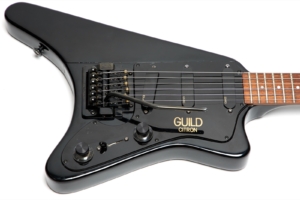
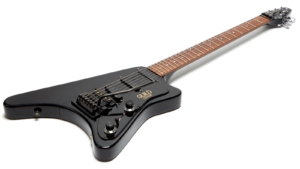

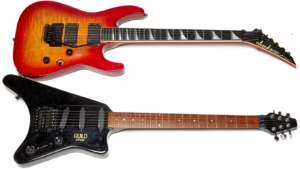
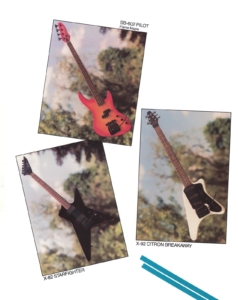
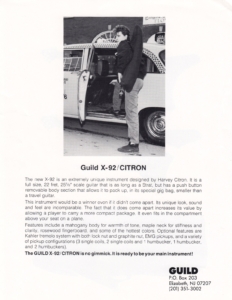
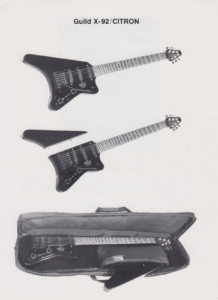
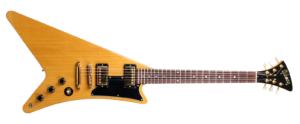
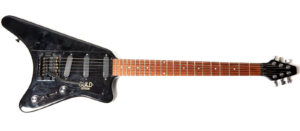
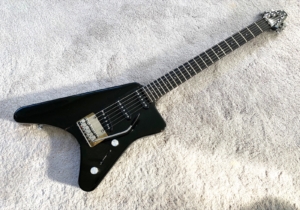
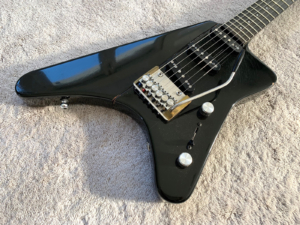
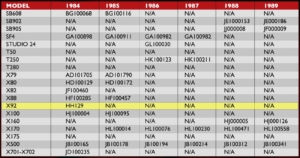
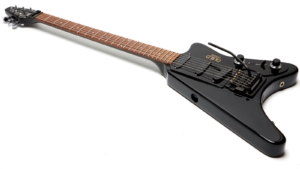
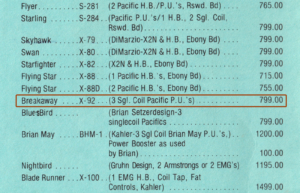
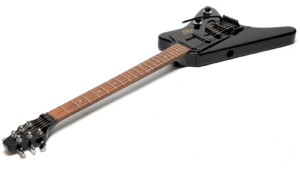
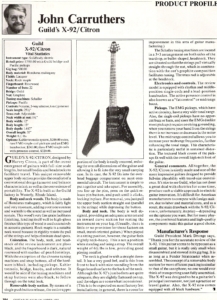
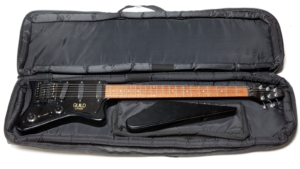
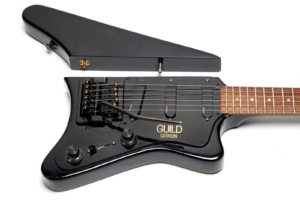
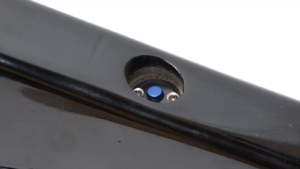
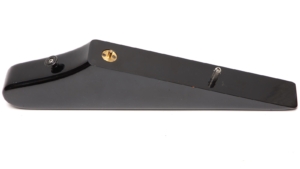
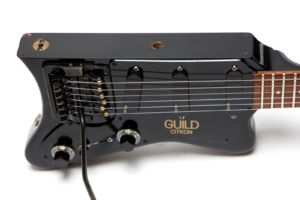
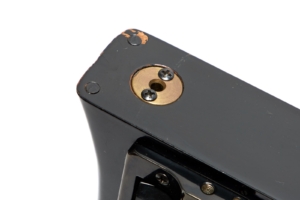
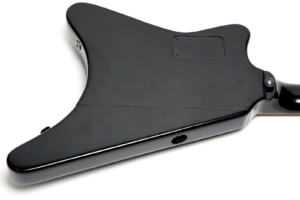
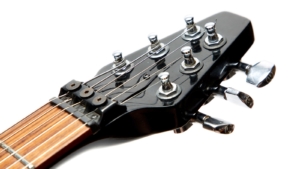

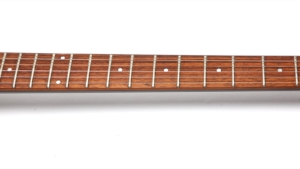
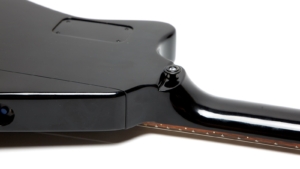
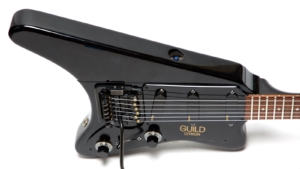
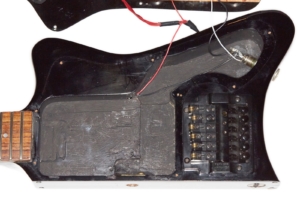
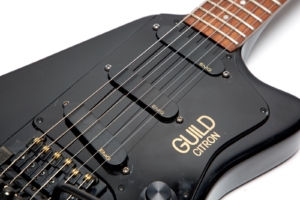
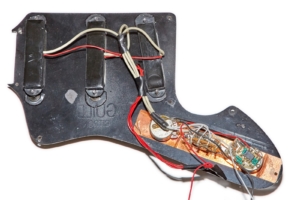
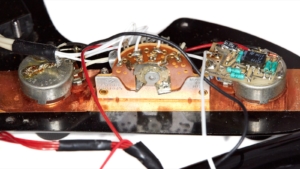
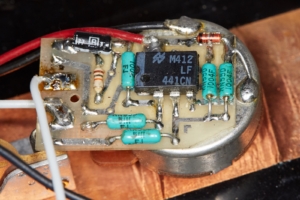
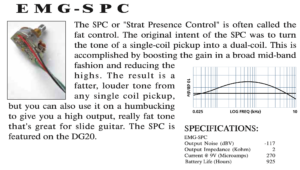
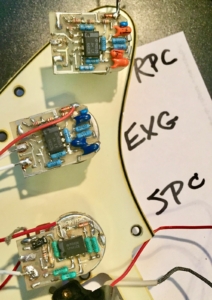
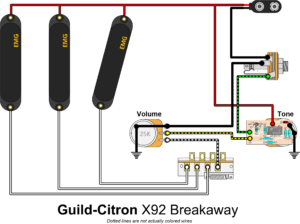
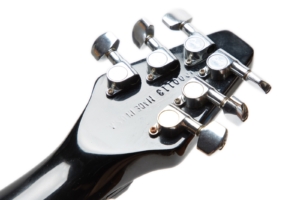
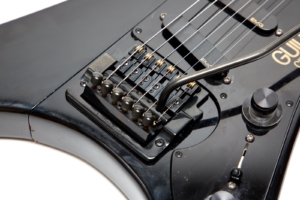
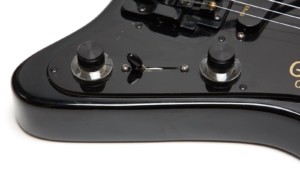
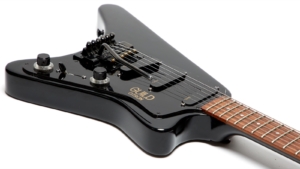
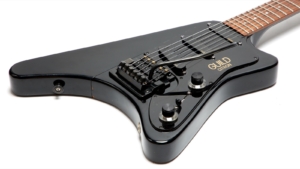
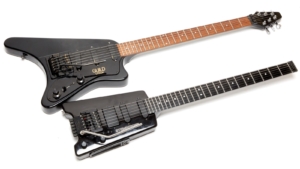


Hey GAD,
I checked my X92 sn and its 112 so likely from the same lot as yours.
Also, what is Grots SN?
M
Sorry – I have no idea. PMing you on LTG.
that picture of the EMG SPC saved me a lot of time yesterday. Thanks.
It was really helpful to see where the 9v wire and the output connected.
I have early-90’s EMG documentation but there’s no mention anywhere of that version, and the owner/wirer of this guitar is no longer with us.
His cousin thanks you and I thank you.
I actually dig it. The 80s rocked. I’m 60 and we had the best guitar designs
Ibanez RG / Steve Vai guitar.
Hammer guitars
The Wolfgang
The Charvels and Jackson’s
The ESPs
The Super Strat of many makes and models
Robin Guitars,
Many many more.